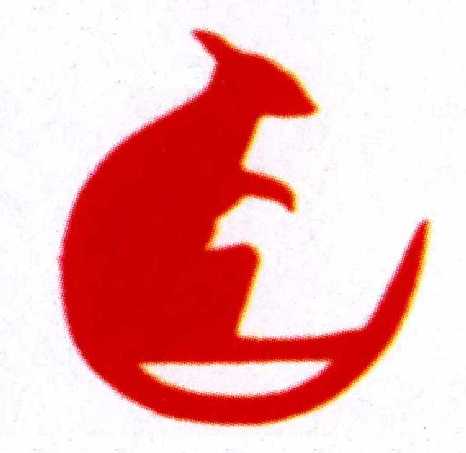
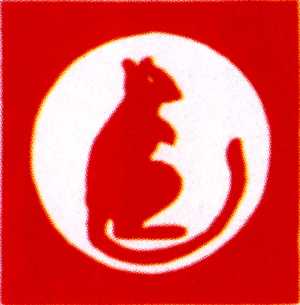
Regiments That Served With The 7th Armoured Division
During its history the 7th Armoured Division many different units served with the Division and
its Brigades. I have tried to include as many as possible with as much information as possible, but I apologise is I have omitted any.
This will include the Royal Army Service Corps [including
NZASC and RIASC] (
RASC), Royal Army Ordnance Corps (RAOC), Royal Army Medical Corps (RAMC) and Army Dental Corps (ADC), the Royal Corps of Signals (R.Sigs),
including Middlesex Yeomanry, Royal Army Chaplains Department (RAChD),
Intelligence Corps, Corps of Military Police (CMP), and Others Units (Cheshire Regiment, Northumberland Fusiliers and Royal Armoured Corps).
RASC & RAOC
|
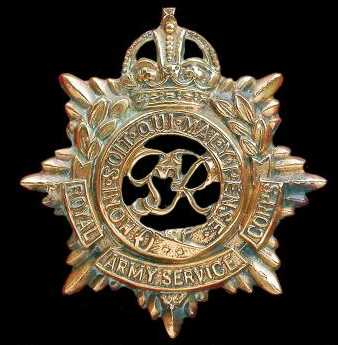
|
|
No. 5 Company, RASC |
|
No. 58 Company, RASC |
|
No. 65 Company, RASC |
|
No. 67 Company, RASC |
|
No. 133 Company, RASC |
|
No. 287 Company, RASC |
|
No. 432 Company, RASC |
|
No. 507 Company, RASC |
|
No. 550 Company, RASC |
|
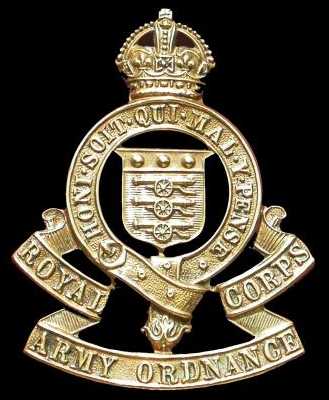 |
|
Divisional Workshops, RAOC |
|
Divisional Ordnance Field Park, RAOC |
|
Divisional Forward Delivery Workshop Section, RAOC |
|
1st Light Repair Section, RAOC |
|
2nd Light Repair Section, RAOC |
|
3rd Light Repair Section, RAOC |
|
1st Light AA Regiment Workshops, RAOC |
|
15th Light AA Regiment Workshops, RAOC |
|
22nd Armoured Brigade Ordnance Field Park, RAOC |
|
131st Brigade Ordnance Field Park, RAOC |
|
The Royal Logistic Corps Museum
Blackdown Barracks
Deepcut
Camberley
Surrey
GU16 6RW
Tel: 01252 340 871 |
The History of the Royal Army
Service Corps: The Royal Army Service Corps was formed from the historical Board of Ordnance, Commissary General and other organisations such as the Corps of Waggoners. Its familiar organisation really can in 1889, when the Army Service Corps was formed by amalgamation of Commissariat and Transport
Staff and Commissariat and Transport Staff Corps. In 1902, the Mechanical Transport Section transferred from Royal Engineers
and in 1914 Inland Water Transport section was transferred to Royal Engineers.
After serving everywhere during the First World War, in 1918, it was named the Royal Army Service Corps.
The Royal Army Service Corps amalgamated with Transportation and Movement Control Service of the Royal Engineers,
in 1965 to form the Royal Corps of Transport. On 5th April 1993, the Royal Corps of
Transport was absorbed along the Royal Army Ordnance Corps, Royal Pioneer Corps, Army Catering Corps, and the Postal and Courier Service of the Royal Engineers to form the Royal Logistic Corps.
Before and during World War Two the
RASC was organised into companies and although they were not formally organised into a battalion, the
RASC units of a division were collected under the Commander, Royal Army Service Corps.
Some companies carried out petrol supply duties, other general supply work while
others were assigned to units such as the 131st (Queen's) Lorried Infantry
Brigade to transport the troops around in lorries and Troop Carrying Vehicles.
The RASC did not man the 'Kangaroo' carriers, who were instead driven by men
from the Royal Armoured Corps.
The History of the Royal Army Ordnance Corps:
The Royal Army Ordnance Corps is one of the oldest corps in the
army and can trace its origins to The Ordnance Board of to
1414 when Henry V appointed Nicholas Merbury as the Master of Ordnance and John
Louth as his Clerk of Works. In fact The Royal Artillery, Royal Engineers &
Royal Army Ordnance Corps can all trace their history back to this same common
starting point. The former was present at the Battle of Agincourt to provide
expert advise on the engines of was used in that conflict. In 1518 the
"Board of Ordnance" was constituted, with the addition of a Lieutenant
as second-in-command, a Surveyor and a Storekeeper. It is evident that the
traditional functions exercised by the Board until the middle of the 19th
Century, that is, assessment of design, procurement, inspection to maintain
standards, storage, stock-taking and accounting, were already being carried out.
The offices of the Board were in the Tower of London, where they remained for
many years. The Select Committee, part of the Board of Ordnance and progenitor
of the present day Ordnance Board, was formed in the Royal Arsenal at Woolwich
in 1805. The title of "Master General of the Ordnance" appears to have
been first used in 1603 and is used to this day, the present holder of the
office still being responsible for the administration of the Board.
In 1683 the Board,
having been an Army institution, were reconstituted as a Civil Department and
were given responsibility for warlike stores for both the Navy and the Army.
From this date the power of the Board increased greatly. Barracks, Land Survey
(Ordnance Survey), Fortifications, Contracts and the control of Armament
Factories came under their purview. Additionally, the Artillery (from 1682)
Engineers and 'Ordnance' Field Train (1792) were all commanded and controlled by
the Master General of the Ordnance who even commissioned their officers, with
King or the Commander-in-Chief appointing the chief Officers of the Board. By
the beginning of the 19th Century, The Board of Ordnance was the second largest
Department of State, next only to the Treasury, and the Master General had a
seat in the Cabinet. Famous Masters General's included the Duke of Marlborough
and Duke of Wellington, with Load Raglan being the last Master General of the
Board while was also Commander-in-Chief in the Crimea.
However, this very
power and size, plus the anomalous split in command of the armed forces between
the Master General and the Secretary of State for War, were to lead to the
Board's demise. In 1855, in the absence of Load Raglan, the Board, and the
office of the Master General were abolished and the responsibilities were passed
to the Secretary of State. The real history of the Royal Army Ordnance Corps began in 1875, when the Control Department was disbanded and its members (all commissioned officers) were divided between two new departments: the Commissariat and Transport Department (which later became the Royal Army Service Corps) and the Ordnance Store Department. In 1877 the Ordnance Store Branch, consisting only of other ranks, was formed to support the Ordnance Store Department (previously other ranks in ordnance trades had belonged to the Army Service Corps and its predecessors). In 1881, this latter branch was replaced by the Ordnance Store Corps, still officered by the Ordnance Store Department. In 1896 these two were superseded by the Army Ordnance Department
(AOD) and the Army Ordnance Corps (AOC). The RAOC was formally established as the
in 1918 by the amalgamation of the Army Ordnance Department and Army Ordnance Corps. The Royal Army
Ordnance Corps was absorbed
along with the Royal Corps of Transport, Army Catering Corps, and the Postal and Courier Service of the Royal Engineers
on 5th April 1993, to form the Royal Logistic Corps.
Before and during World War Two the RAOC was organised into
companies and although they were not formally organised into a battalion, the RAOC units of a division were collected under a headquarters and a commander known as the Deputy Assistant Director of Ordnance Services (DADOS). Officers with the designations of Assistant Director of Ordnance Services
(ADOS) and Deputy Director of Ordnance Services (DDOS) served at corps level and above. The Director of Ordnance Services (DOS), a Major-General, was the head of ordnance at the War Office in London.
It was only after World War Two, that the RAOC companies were formally collected into battalions
Go to top
Royal Indian Army Service
Corps
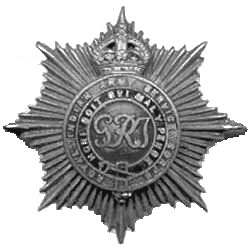 |
|
1st Supply Issue Section RIASC |
The logistical support of the Indian Army to
keep the fighting forces supplied was a specialised activity over the decades
and centuries. Original this was the job of the Supply Department and the
Transport Departments, but these two units were merged to form the Royal Indian
Army Service Corps in 1884. After Indian's independence in 1947 the RIASC became
The Indian Army Service Corps.
Go to top
New Zealand Army Service
Corps
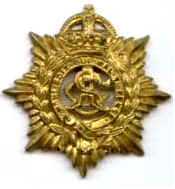 |
|
4th New Zealand Reserve Coy |
The New Zealand Army Service Corps was formed 1 March 1913 and saw service in Egypt during WW1.
In 1922 the Permanent Army Service Corps was formed and was amalgamated with the Territorial Force on 9th January
1947, with both regular and territorial units seeing service during the war in
the Middle East, Italy and the Far East campaigns. It was granted the prefix "Royal"
on 12th July 1947 and on 12th May 1979 was renamed the Royal New Zealand Corps of Transport.
This new Corps later became part of Royal New Zealand Army Logistic Regiment.
The No.4 New Zealand Reserve Company served with 7th Armoured Division during
Operation Compass and earned fame by borrowing rifles and joining the assault on
Tummar West where they charged at the head of the British infantry with cries of "Come on you Pommie bastards"
Go to top
Royal Army Medical Corps (RAMC) and Army Dental Corps
(ADC)
|
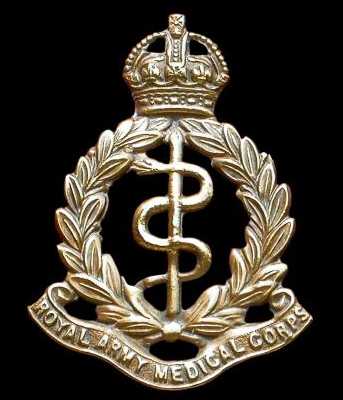
|
|
2nd Light Field Ambulance |
|
7th Light Field Ambulance |
|
13th Light Field Ambulance |
|
14th Light Field Ambulance |
|
15th Light Field Ambulance |
|
7th Light Field Hygiene Section |
|
70th Field Hygiene Section |
|
21st Mobile Casualty Clearing Station |
|
3rd Field Surgical Team |
|
7th Field Transfusion Unit |
|
29th Field Dressing Station |
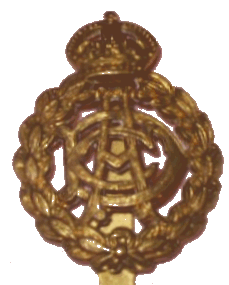 |
|
132nd Mobile Dental Unit |
|
134th Mobile Dental Unit |
|
135th Mobile Dental Unit |
|
The Army Medical Services Museum
Keogh Barracks
Ash Vale
Aldershot
Hampshire
GU12 5RQ
Tel: 01252 340 212 |
RAMC: The RAMC traces its history back to the foundation of the Regular Army, following the restoration of King Charles II in 1660, but it was not until 1898 that officers and soldiers were incorporated into one body known as the Royal Army Medical Corps. The RAMC motto In Arduis Fidelius is translated as 'Steadfast in Adversity'. The 31 Victoria Crosses won by the Corps, including a double VC and one recipient of both the VC and the Iron Cross, bear testimony to the motto and the character and ideals of the men and women who wear the badge.
The table below give some idea of the type of work the
RAMC had to deal with, listing the distribution of wounds by anatomical regions
and by arms of service for the Division between 23rd October and 19th November
1942.
| Anatomical Region |
Armoured |
Motorised Infantry |
Artillery |
Total wounds |
| Head |
42 (19.6%) |
80 (14.8%) |
27 (12.0%) |
156 (15.0%) |
| Chest |
11 (5.1%) |
40 (7.4%) |
24 (8.0 %) |
75 (7.0%) |
| Abdomen |
17(7.9%) |
18 (3.3%) |
16 (3.0%) |
51 (4.8%) |
| Back |
10 (4.6%) |
33 (6.5%) |
21 (7.0%) |
66 (6.3%) |
| Arms |
32 (15.0%) |
87 (16.1%) |
53 (17.4%) |
172 (16.0%) |
| Buttocks |
16 (7.5%) |
41 (7.5%) |
24 (8.0%) |
81 (7.6%) |
| Legs |
49 (22.9%) |
165 (30.7%) |
89 (29.0%) |
303 (28.7%) |
| Multiple |
15 (7.0%) |
34 (6.3%) |
19 (6.5%) |
68 (6.5%) |
| N.Y.D. (N) |
1 (0.5%) |
34 (6.3%) |
11 (3.5%) |
46 (4.3%) |
| Burns |
21 (9.8%) |
7 (1.3%) |
11 (3.5%) |
39 (3.7%) |
| Total Wounds |
214 |
541 |
303 |
1,060 |
In a 36 hour period on 24th to 25th October 1942 the
Medical units supporting the Division dealt with 590 casualities.
ADC
: As early as 1660 regimental surgeons were required to preserve the soldier's teeth so that he could bite through the paper cartridge when loading. But it wasn't until the Boer War
(1901) that the soldier's need for regular treatment was recognised and in World War I dental surgeons served in the medical service. The value placed on the work of the dental officer led to the formation of the Army Dental Corps in 1921.
The title 'Royal' was confirmed in November 1946 and today, members of the RADC serve in dental centres or military hospitals where they carry out their normal day-to-day work. But they are soldiers too and have a war role within a Field Ambulance or Field Hospital.
Go to Top
|

|
|
Royal Corps of Signals |
|
The Royal Signals Museum
Blandford Camp
BLANDFORD FORUM
Dorset
DT11 8RH
ENGLAND
Tel: 01258 482248
E-mail: info@royalsignalsmuseum.com |
The Royal Corps of Signals
The Greek armies had the Torch Telegraph and the Water Telegraph, and the Roman Army used coloured smoke as a means of communication. In England, during the 16th century, beacons were used and, in 1796, the Admiralty adopted a shutter-type machine, known as the 'Murray Lettering Telegraph'. Morse Code and electric telegraph were used for the first time in the Crimean War (1835-1837) and, following the Abyssinian War of 1867, a Signal Wing was formed by the Royal Engineers at Chatham.
In 1884, the Telegraph Battalion Royal Engineers was formed and took part in the Nile Campaign, later playing a prominent role in the Ashanti Campaign of 1895-1896. It was during this campaign that men of the telegraph Battalion hacked a path for an overhead line from the Cape coast to
Prahsu, covering 72 miles through jungle. It was in this campaign that as members of the Telegraph Battalion staggered out of the jungle then confronted King Prempeh who so surprised by their action then offered the surrender of his Army. King Prempeh's throne is now displayed in the Royal Signals Museum at
Blandford.
Signalling remained the responsibility of the Telegraph Battalion during the Boer War and until 1908, when the Royal Engineer Signals Service was formed and provided communications during World War One. At this time, the Despatch Rider came into prominence and 'wireless sets' were introduced into service. Wireless communications were provided in France and Flanders and also in the campaigns in
Salonika, Palestine and Mesopotamia.
The first official agreement to form a separate Signal Corps, from the Royal Engineers, was made in 1918, before the end of World War One. Due to various policy delays, the formation of the 'Corps' was delayed until 1920. A Royal Warrant was signed by the Secretary of State for War, the Rt. Hon Winston S Churchill, who gave the Sovereign's approval for the formation of a 'Corps of Signals' on 28th June 1920. Six weeks later, His Majesty the King conferred the title 'Royal Corps of Signals'.
During the 1920s and 1930s, the Corps increased its strength and had personnel serving in overseas stations such as Shanghai, Hong Kong, Singapore, Ceylon, Egypt, Jamaica and many other 'out-posts of the Empire'. The largest portion of the Corps was overseas, one third being concentrated in India. Throughout World War Two, members of the Corps served in every theatre of war and, at the end, the Corps had a serving strength of 8,518 officers and 142,472 soldiers.
The Corps still strives to live up to its motto, 'Certa Cito', which freely translated means 'Swift and Sure', with the Corps taking precedence after the Royal Engineers.
|
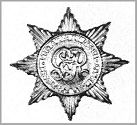
|
|
Middlesex Yeomanry (part
or Royal Corps of Signals from 1920) |
|
The Royal Signals Museum
Blandford Camp
BLANDFORD FORUM
Dorset
DT11 8RH
ENGLAND
Tel: 01258 482248
E-mail: info@royalsignalsmuseum.com |
Middlesex Yeomanry
Service History:
From the 1940 onwards, the Divisional Signals for the
7th Armoured Division were provided by men from the Middlesex Yeomanry,
with eventually both the 1st and 2nd Battalions being
represented units the including elements from both served in joined the
Division. The men of the Middlesex Yeomanry saw service in all the Divisions
campaigns from the Western Desert, to Italy, Normandy and though the Low
Countries to Germany itself.
Short History
This short history of the Middlesex Yeomanry is an attempt to show it changed
from the role of that of local armed police to an effective military force with
a record of distinguished service in South Africa 1900-02; the Great War
1914-1918, the Second World War 1939-1945, and today a highly sophisticated
technical unit forming part of the 39th (Skinners) Signal Regiment (V).
It was during the Napoleonic Wars that the Gentlemen of Uxbridge sought
permission from the Government to form a Military Association to maintain law
and order when the Regular Forces were sent to the coast to protect the country
against invasion by the French. A Cavalry Troop was raised in 1797 and titled
the 'Uxbridge Volunteer Cavalry' and its first Captain-Commandant was
Christopher Baynes Esq., (later Sir Christopher). The role of the Uxbridge
Volunteer Cavalry was to act as armed police and support the Civil Powers in
maintaining law and order in the local parishes.
A second troop was raised in 1798 with the change of title to 'Uxbridge
Yeomanry Cavalry'. Captain-Commandant Christopher Baynes was appointed
Major-Commandant and the UYC was given a wider sphere of operation. The
volunteers provided their own clothes and horses, and received no payment if
called out to quell a disturbance.
At the end of the war with France the number of Yeomanry units was reduced
and it was not until 1830 that the Uxbridge Yeomanry Cavalry was reformed to
maintain the peace during a period of extreme poverty, when rioters terrorised
the inhabitants and destroyed machinery which was being introduced into the
agriculture and cotton industries.
The uniform worn by the Uxbridge Yeomanry Cavalry was of the Light Dragoon
pattern with a broad-topped shako of dark green, ornamented with a brass Maltese
Cross with the Arms of the County of Middlesex placed in the centre, and the
motto adopted was 'Pro Aris et Focis', which can be loosely interpreted as 'For
Hearth and Home'. In 1856 the badge was changed to a gilt metal six-pointed
star, surmounted by the Royal Crown, and a circle bearing the regimental motto
'Pro Aris et Focis' enclosing the Royal Cypher 'VR'.
Middlesex Yeomanry Cavalry - 1871
There were variations to the uniform until 1871 when the Uxbridge Yeomanry
Cavalry was ordered to raise a fourth troop and to change its title to
'Middlesex Yeomanry Cavalry'. The Commanding Officer adopted the Hussar uniform,
keeping the green Hussar tunic with black collars and cuffs; yellow Hussar lace
on the collars, cuffs, and back, with three across the breast. Blue-black
overalls with double red Hussar stripes; a Hussar Busby with dark green bag, and
a red-under-green brush, with yellow lines, trimmings and bosses. Subsequent
changes were made which proved to be unpopular and it was not until Lt. Col. W.
Duncan took over command in April 1910 that the Hussar uniform was firmly
established. The only changes were a Hussar Busby with red bag, and overalls
with double yellow stripes, as worn today by Escorts on ceremonial occasions
Royal Escorts
Throughout the 19th century the regiment was often required to perform escort
duty to the Sovereign and the Royal family. The first occasion was in 1834 when
King William IV travelled through Uxbridge to visit the Marquess of Westminster
at Moor Park.
After the death of the King in 1837 the regiment were frequently called upon
to escort Queen Victoria through Middlesex on her way to Windsor, and on
reaching the county boundary the Escort would hand over to a detachment of the
Royal Horse Guards to escort her to the Castle.
Duke of Cambridge's Hussars - 1884.
In April 1884 the Queen graciously honoured the Regiment with the title
'Middlesex (Duke of Cambridge's Hussars) Yeomanry Cavalry'. There were many
changes in the Yeomanry Force during the later years of the 19th century. The
Squadron became the official unit. The Middlesex Yeomanry was formed of two
squadrons, each with two troops, and the regiment was brigaded with the Royal
Berkshire Yeomanry Cavalry, which formed the 1st Yeomanry Brigade.
South African War - 1900-1902
Soon after the reverses in Natal the Government found that the only way to
raise a large number of mounted men was to call upon the Yeomanry for volunteers
to serve overseas. There was an immediate response from the regiment and by the
end of January 1900 the Middlesex Yeomanry had raised three Companies, the 34th,
the 35th (2nd 'Middlesex Yeomanry), and the 62nd (3rd Middlesex Yeomanry) plus a
maxim-gun detachment. The 34th and 35th Companies together with two Companies
raised in Kent formed the 11th Battalion under, command of Colonel Kenyon
Mitford, the Commanding Officer of the Middlesex Yeomanry. The 62nd was placed
under command of the 14th Battalion.
In January 1901 a second contingent of Yeomanry was raised to replace the
original 34th, 35th and 62nd Companies, and with a fourth Company, the 112th,
formed the 112th (Kent and Middlesex) Battalion under command of Colonel R.B .Firman
(Middlesex Yeomanry). "Few Yeomanry Regiments have such proud memories of
daring in South Africa as the two fights against such heavy odds which occurred
at Senekel and Tweefonteen". {Historical Records of The Middlesex Yeomanry
1797-1927).
Middlesex (Duke of Cambridge's Hussars) Imperial
Yeomanry. 1900-1914
With the end of the South African War m 1902 there was a general
reorganisation of the Yeomanry. The title of the whole force was changed to
Imperial Yeomanry' and the name of the regiment changed to 'Middlesex (Duke of
Cambridge's Hussars) Imperial Yeomanry'.
The regiment was increased to four squadrons totalling 596 all ranks, which
included a machine-gun detachment. At the time there were four new Yeomanry
regiments toeing recruited in London, so it was not an easy task to increase the
strength of the regiment from 200 to about 600 all ranks.
1st County of London Yeomanry Middlesex, (Duke of
Cambridge's Hussars)
On the 1st April 1908 the regiment became part of the Territorial Force being
recruited in London. The title then changed to the 1st County of London
Yeomanry, Middlesex, (Duke of Cambridge's Hussars) and with the other London
Yeomanry Units formed the London Mounted Brigade
The Great War - 1914-1918 In the summer of 1914 the regiment was in camp at
Moulsford Berkshire when the declaration of war with Germany interrupted the
inter-regimental sports planned to take place on the Bank Holiday. Instead the
regiment returned to headquarters and by the 5th August was ready to mobilise.
The Middlesex Yeomanry together with the 1st City of London Yeomanry (The
Rough Riders) and the 3rd County of London Yeomanry (The Sharpshooters) formed
the 8th Mounted Brigade of the Yeomanry Mounted Division.
It was the Yeomanry Regiments of this Division which were used as detached
regiments and brigades on the Egyptian, Gallipoli and Salonica fronts and with
the Desert Column under General Allenby, took part in the advance from the Suez
Canal culminating in the Battles of Gaza in 1917.
Major A.M. Lafone V.C. 27th October 1917
General Allenby's attack on Beersheba had been planned for the 31st October
and the regiment, with two sub-sections of the 21st Machine-gun Squadron, were
holding fortified points 720 and 630 along the line El Buggar - Bir el Girheir.
At dawn on the 27th October the small force at point 720, under command of Major
Lafone, who was ordered to hold the position at all costs, faced a fierce attack
by a superior force of Turks and suffered heavy shelling and machine-gun fire,
which lasted for several hours. Most of his small force had been killed or
wounded and he ordered the survivors to go back, whilst he continued to fire
from the shoulder at point blank range to cover the withdrawal of his men. At
11.15 hrs the position was over-run. Later that afternoon the 53rd Division
advanced up the hill in attack formation and the Turks retreated to their
defence positions. The railway had been saved and the construction of the
railhead
at Karm continued, which then General Allenby's offensive to open as planned.
Major Lafone was posthumously awarded the Victoria Cross "For most
conspicuous bravery, leadership and self-sacrifice when holding a position for
over seven hours against vastly superior forces............His cheerfulness and
courage were a splendid inspiration to his men, and by his leadership and
devotion he was enabled to maintain his position, which he had been ordered to
hold at all costs".
|
Battle Honours
South
Africa
1900-1901 |
|
The
Great War
1914-1918 |
|
Macedonia
1916-17
Gallipoli
1915
El
Mughar
Sharon
Suvia
Egypt
1915-16 |
Nebi
Samwil
Damascus
Scimitar
Hill
Gaza
Megiddo
Palestine
1917-18 |
Royal Signals - 1920.
After the war there was a reduction in the number of cavalry regiments and
the Middlesex Yeomanry decided to accept the role of Cavalry Signals to the 2nd
Cavalry Division, and recruiting started on the 20th May 1920, while the majority of surplus Yeomanry Regiments chose to convert to
Artillery. The 2nd Cavalry Divisional Signals (Middlesex Yeomanry) was
integrated with the newly formed Royal Corps of Signals in June of that year.
The regiment fought hard to retain its old title, privileges, cap badge, motto
and uniform, including the ancient custom of NCO's wearing a crown above their
stripes, and the Quarter-master wearing four stripes with a crown. The shoulder
title worn by the men changed to 'Royal Corps of Signals' with the concession of
a 'Y' above it.
Second World War - 1939-1945
The years between the wars had seen the cavalry regiments gradually change
from mounted to mechanised regiments, although the 2nd Cavalry Division had
retained some of its horses at the outbreak of war in 1939.
Following the Munich crisis in 1938, and the subsequent threat of war,
thousands of young men and women volunteered to join the armed forces. In
December 1938 the title of the regiment changed to Mobile Divisional Signals
(Middlesex Yeomanry) T.A. until a second regiment was formed in 1939 and the
title changed to 1st (Middlesex Yeomanry) Cavalry Divisional Signals in November
1939. The second regiment became the 2nd (Middlesex Yeomanry) Armoured
Divisional Signals.
The 1st Cavalry Division was sent to the Middle East and arrived in Palestine
in January 1940. The 2nd Armoured Division (less 22nd Armoured Brigade) arrived
in Egypt on New Year's Day 1941. It was a critical stage of the war.' General
Wavell had recently driven the Italians out of Cyrenaica and the Germans were
threatening to advance through the Balkans into Greece, so the Allied Forces
were threatened on two fronts.
The 1st Cavalry Division played a prominent part in the campaigns in Iraq,
Syria and Persia, and some of the units were sent to the Western Desert with the
2nd Armoured Division to face the newly formed German Afrika Korps.
The mechanisation of the cavalry regiments brought about changes, and the 1st
Cavalry Division became 10th Armoured Division which included the 9th Armoured
Brigade and many of the 1st Middlesex Yeomanry formed the Divisional Signals.
In 1942 the 10th Armoured Division became part of 8th Army and took a
prominent part in the Battle of El Alamein, where 9th Armoured Brigade (with
Middlesex Yeomanry Signal Squadron) had an independent role under command of the
2nd New Zealand Division. Afterwards the brigade was withdrawn to
Palestine/Syria area to prepare for the part it was to play in the Italian
campaign.
A Special Wireless Section from the 1st Middlesex Yeomanry was sent to Crete
in April 1941, and the 1st Armoured Brigade (No 3 Squadron & part No 2
Squadron, 2nd Middlesex Yeomanry) went with the expeditionary force to Greece.
The remnants of the 2nd Armoured Division, reinforced by 3rd Armoured Brigade
and equipped with worn out tanks left behind after General Wavell's campaign in
December 1940, had been sent to the Western Desert in March 1941. At the
beginning of April the Division was attacked by the German Afrika Korps which
had recently arrived in north Africa, and in spite of a fiercely fought
rear-guard action Divisional Headquarters was surrounded at Mechili and forced
to surrender on the 8th April.
Many survivors found their way into Tobruk and back to base to reinforce 7th
Armoured Division and other units being re-fitted, At about the same time the
Allied troops were being evacuated from Greece and, by the end of May, Crete had
been lost to the German paratroops.
It is rare to find the Middlesex Yeomanry named in books written about the
Second World War, yet the 1st Middlesex Yeomanry was the Signal Regiment to the
1st Cavalry Division, and the 2nd Middlesex Yeomanry the Signal Regiment to 2nd
Armoured Division. It was the result of both regiments being reduced in strength
by the loss of so many Signal Troops to reinforce other formations that, by
April 1941, the Middlesex Yeomanry could no longer operate as a regiment.
Thereafter Middlesex Yeomen were to be found serving in all formations of
Royal Signals throughout the Middle East, including the Long Range Desert Group,
Small Boats Sections, Special Operations Executive, Airborne Signals, and later
in north-west Europe, India, and Burma. At all times they continued to wear the
Middlesex Yeomanry cap badge and badges of rank, wherever they served.
22nd Armoured Brigade (No .4 Squadron, 2nd Middlesex Yeomanry) arrived in
Egypt, as an independent armoured brigade, at the beginning of October 1941 and
was in action at Sidi Rezegh in November. There followed the relief of Tobruk
and the enemy was again forced back to the Tripolitanian border at El Agheila.
The Brigade returned to base at the beginning of 1942 and was re-equipped and
by the 27th May the Brigade was back in the desert ready to meet Rommel when he
attacked the Gazala Line. It was a long summer as Rommel gradually encircled the
Allied Forces who fought fiercely in the heat and dust storms at 'Knightsbridge'
and Bir Hachcim, until the fall of Tobruk and they were forced back to the
Alamein Line.
General Montgomery took command of the 8th Army in August 1942 and, with the
increasing number of troops and modern equipment supporting the Allies, defeated
Rommel at Alam Haifa at the beginning of September. It was the turning point of
the war. On the 7th September 22nd Armoured Brigade became a permanent part of
7th Armoured Division (The Desert Rats) and remained with the Division until the
end of the war.
At the Battle of El Alamein on the 23rd October 1942, 7th Armoured Division
was in the south of the line, but moved north at the beginning of November, then
through the minefields and joined in the pursuit of the enemy via Tripoli to
Tunis which ended with the defeat of the enemy forces in North Africa in May
1943.
In September 1943 the 7th Armoured Division landed at Salerno on the west
coast of Italy where it came under command of the 5th American Army, and after
crossing the River Volturno the Division returned to the U.K. to prepare for the
Second Front. The Division arrived in East Anglia in January 1944 where it
prepared for the invasion of Europe, and landed on the Normandy beaches on D+1,
7th June 1944.
7th Armoured Division was in action at Caen, Villers-Bocage, Falaise, Ghent,
Eindhoven, Nijmegen then across the Rhine into Germany, the surrender of Hamburg
and the end of the war in May 1945.
Airborne Signals and afterwards 1945-1995
The regiment was re-formed in 1947 and became the 16th Airborne Divisional
Signals (Middlesex Yeomanry) T.A., and continued as such until the T.A. Airborne
Division was reduced to a Parachute Brigade Group in 1956
The Middlesex Yeomanry Signal Regiment became 40 Signal Regiment (Middlesex
Yeomanry) T.A., until 1961 when it was amalgamated with 47 (London) Signal
Regiment T.A. and the newly formed regiment became known as 47 Signal Regiment
(Middlesex Yeomanry) T.A. The-new regiment was given the role of SHAPE Troops.
(Supreme Headquarters Allied Powers Europe), No.3 Squadron, 40 'Signal
Regiment, 305 (Parachute Brigade) Signal Squadron T.A., did not become part of
47 Signal Regiment (Middlesex Yeomanry) T.A. but continued in its role as the
Signal Squadron to 44 Parachute Brigade, retaining its Middlesex Yeomanry cap
badge and badges of rank.
Territorial Army Volunteer Reserve - 1967
When the Territorial Army Volunteer Reserve was formed in 1967 the Middlesex
Yeomanry retained its title, but like so many other yeomanry regiments was
reduced to squadron establishment and became 47 (Middlesex Yeomanry) Signal
Squadron TAVR, 31st (Greater London) Signal Regiment.
The Squadron was permitted to continue the ancient custom of NCO's wearing a
crown above their stripes, and the SQMS wearing four stripes and a crown, and
Middlesex Yeomanry collar badges continued to be worn on regulation uniform, but
the Middlesex Yeomanry cap badge was forfeited for the Royal Signals 'Mercury'
cap badge.
The coloured side hat of scarlet, piped with gold, and rifle green flaps
piped with gold with scarlet tipped peak and two buttons, worn by officers and
soldiers off duty, was also retained. Officers caps have an embroidered cap
badge, in gold on rifle green cloth, of an oval strap bearing the motto Pro Aris
et Focis, in the centre the cypher MYC, and the whole ensigned by St Edward's
crown. Soldiers wear a metal Middlesex Yeomanry collar badge as a cap badge. The
khaki/green woven lanyard representing the rigging line of an army parachute
commemorating the previous service of the unit, and the webbing stable belt in
black over crimson, gold, green, and black stripes, fastened by two nickel
plated buckles and black leather straps, worn when in shirt sleeve order, are
also retained.
In 1995 47 (Middlesex Yeomanry) Signal Squadron (V) came under command of the
39th (Skinners) Signal Regiment (V).
Go to Top
|
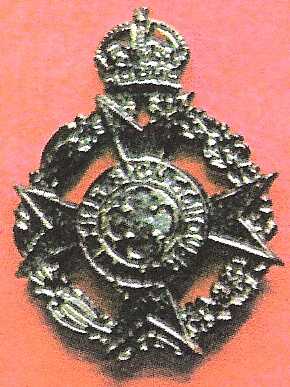 |
|
Royal Army Chaplains Department |
Museum of the Royal Army Chaplains' Department
Bagshot Park
Bagshot
Surrey
GU19 5PL |
Royal Army Chaplains Department
Over centuries in times of war men of all faiths have turned to God before and during battle. In Medieval times Monks and other clergy would accompany the armies to hear confession before a soldier took to the field and to administer whatever help they could afterwards, if only to ensure the dead were given a decent burial. In 1796 the Army Chaplains' Department was formed with solely Church of England chaplains, when a Royal Warrant was issued,
with Presbyterians being admitted in 1827, Roman Catholics in 1836, Wesleyans in 1881 and in 1892 the first Jewish Chaplain was appointed. In 1919 unit became the Royal Army Chaplains' Department, with the motto of 'In This Sign Conquer'.
Although the term Chaplain dates from the reign of Edward I, clergymen have always been involved in the Army as ministers of Word and Sacrament, or indeed as military leaders
To the soldiers they became know as 'The Padres' and 'The Sky Pilots', but wherever the British and Commonwealth Army fought the Royal Army Chaplains' Department were also there to provide First Aid and pastoral care for friend and foe alike with many undergoing Parachute training so that they could serve in the Airborne units.
Many Chaplains have died on the battlefield with 12 of the 60 Chaplains serving with the Army in the Crimea War, dying there. In the First World War 179 Chaplains were killed in action and another 134 in the Second World War. There are three Royal Army Chaplains' Department holders of the Victoria cross, with them being The Reverend Theodore Bailey Hardy VC DSO MC CF (the highly decorated non-combatant) for rescuing wounded soldiers from no-mans land in April 1918. He was later killed in action at Rouen, France 18th October 1918. The other two are The Reverend William Robert Fountain Addison VC and The Reverend Edward Noel Mellish VC.
One thing that should be remembered about those of the Chaplains, who served in the front line, is that it takes great courage to go into battle armed only with one's faith and a Bible!
Go to Top
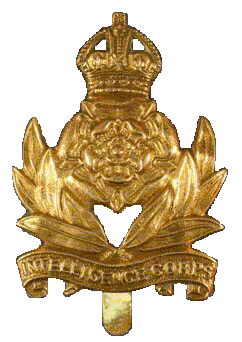 |
|
Intelligence Corps
|
|
270th Field Security Section
|
Military Intelligence Museum
DISC,
Chicksands,
Shefford,
SG17 5PR
Tel: 01462 752896
Fax: 01462 752374
|
Intelligence Corps
Service History
270th Field Security Section was part of the Division during Operation
Compass in December 1941 to early 1942.
A Brief History of the
Intelligence Corps
Prior to the Boer War the British Army tended to
form ad hoc intelligence organisations during campaigns in order to provide the
commander with the necessary information and intelligence to defeat our enemies.
John Churchill, The first Duke of Marlborough stated that ‘no war can be
conducted successfully without early and good intelligence’. Despite the
benefit from the use of intelligence, the organisations that were set up were
disbanded in peacetime
Boer War
During the Boer War (1899-1901), a variety of
information and intelligence gathering units were raised, with some of the
better know ones being Rimington’s Tigers and the Corps of Scouts. This then
led to a need to develop methods to analyse the information collected. A
three-tier system of sources and agencies was used to collect the information,
with field intelligence officers serving alongside the combat units and staff
intelligence officers integrated into formation headquarters analysing the
information. Where as before the war no formation below Divisional Level had an
intelligence officer, Colonel Hume, Director of Military Intelligence (South
Africa) from 1900, was able to identify the requirement for Field Intelligence
Departments with scouts and interpreters and by the end of the war the
intelligence element of the British Forces increase from 2 officers to 132
officers and 2321 soldiers.
First World War
Following the outbreak of the war in August
1914, steps were also taken to raise an Intelligence Corps. The Intelligence
Department at the War Office soon identified a number of Army officers, plus
Metropolitan Police officers and other civilians that would be called up at the
outbreak of hostilities. Following the expiry of the British ultimatum to the
Germans on 5th August 1914 some fifty or so individuals received a telegram
inviting them to join the newly formed Intelligence Corps. The Corps was formed
under its first Commandant, Major T. G. J. Torrie, 17th Light Cavalry, Indian
Army, and consisted of a Headquarters, Dismounted and Mounted Sections, a
Motorcycle Section and a Security Duties Section.
Initially there were no other Ranks except
soldier servants’ or officers’ batmen who were enlisted in 10th (Service)
Battalion, Royal Fusiliers, Intelligence, but in due course police
officers and other with suitable civilian qualifications were employed as Field
Security Police (either transferring to the 10th Fusiliers or retained their own
cap badges). On 12th August 1914 the embryo Corps embarked on the SS Olympia at
Southampton for France with the British Expedition Force. On the 9th September
1914 Major Torrie left the Corps (and was later killed in action on the Somme in
1916) being replaced by Captain, later Field Marshal Lord Wavell. Wavell moved
to the General Staff on 7th December 1914 and was replaced by Major Dunnington
Jefferson who was responsible for establishing the high reputation of the Corps
during the war.
The work of the officers and men of the Intelligence
Corps and Intelligence Department during the First World War extended to all
theatres and behind enemy lines. Former metropolitan Police Officers operated,
as field security police, to great effort behind our own lines identifying enemy
agents, be they French, Belgian or German nationals and thy also helped ensure
that the rear areas and lines of communications remained free from the threat of
subversion, espionage and sabotage. The Corps also successfully ran a number of
agents behind enemy lines and in Europe these were able to observe the movement
of German troops across the continent and provide timely and accurate
indications of German intentions on the western and eastern fronts. The Corps
also developed prisoner of war and refugee debriefing techniques, and became
involved in psychological operations. Despite all its excellent work at the
conclusion of the war most of the Intelligence Corps was disbanded.
Second World War
In the years leading up to the Second World War no effort
was put into contingency planning for wartime Intelligence Corps. The Army was
less prepared for this second Great War than it had been for the first. If it
had not been for the efforts of Major, later Field Marshal Sir Gerald Templar
there would have no intelligence organisation at all on 4th September 1939. His
work, supported by Captain (Retired) F C Davies MC who trained the security
sections, allowed the British Expeditionary Force to deploy to France with 31
Field Security Sections. Upon this small foundation the Corps eventually grew to
3040 officers and 5930 other ranks. The Corps was formally constituted with the
consent of King George VI on 15th July 1940, with the formation being notified
on 19th July 1940 in Army Order 112.
The skills of the Corp’s soldiers in languages and
interrogation were one again used to extract information from the Prisoners of
war, and the civilian population of countries liberated by the Allies. During
the war Signals Intelligence was developed beyond all recognition compared to
the simple tactical interception and direction finding used in the First World
War. The importance of the teams working to crack the Enigma Code at Bletchley
Park is now well know - the Corps contributed greatly to the work at the
locations, plus the outstations that collected the raw information. One such
collection site is now the home of the Corps - Chicksands in Bedfordshire. About
40% of the army personnel at Bletchley were cap badged Intelligence Corps. At
the tactical level, box bodied vehicles, known as ‘Gin Palaces’, operated as
mobile signals interception units providing support to operations at Corps and
Divisional level, operating, close to the front line.
Once again representatives of the Corps were ‘in at the
kill’ at the war’s end and soon formed a key element of the various armies
of occupation in both Europe and the Far East. Colonel Ewart was Montgomery’s
interpreter when the Germans surrendered at Luneburg Heath. In January 1945 the
Corps’ establishment was some 3040 officers and 5930 soldiers with 1553
attached officers.
Post War
After World War Two the main threat was from Communism
and the Corps has played a major role in the games of counter-espionage,
intelligence and counter-intelligence that characterised the Cold War in Europe
and Asia in the latter half of the twentieth century. Since the second world
war, the Corps has deployed with the British Amy on all its major deployments -
Palestine, Cyprus, Korea, Suez, Brunei, Indonesia, Dhofar, Northern Ireland,
Falkland Islands, the Gulf, Africa and the Former Yugoslavia, Sierra Leone, Iraq
and Afghanistan.
In recognition of its meritorious service the Corps was
declared an ‘Arm’ on 1st February 1985. An ‘Arm’ is defined as those
Corps whose role is to be close in combat with the enemy.
Go to Top
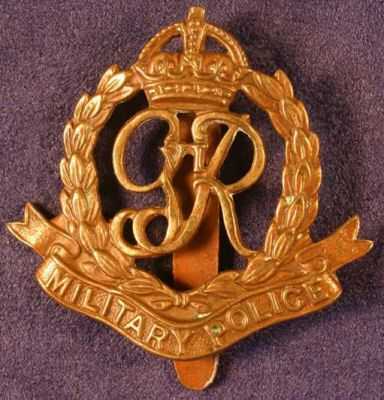 |
|
Corps of Military Police. |
|
The RMP Museum,
The Keep at Roussillon Barracks
Chichester
|
Corps of Military Police
A Brief History of the Royal Military Police
The office of the Provost Marshal is the oldest in the British Army. Prior to the formation of the Military Police, the Provost undertook the role of policing the
army and their function was to enforce military law, as well as maintaining the discipline of the troops.
In the 18th and early 19th Century, members of a Regiment were appointed Assistant Provost Marshal and undertook the duties of military police for that particular unit. As they were unpopular with their former comrades, they were usually promoted into other Regiments at the end of their appointment. When fighting the French in Spain (1807-14), Wellington saw the need for a well trained unit to maintain discipline following an incident where a soldier carrying an important orders got drunk and lost them. The Army’s single Provost Marshal had 24 senior NCOs acting as Assistant Provost Marshals and authorised to punish wrongdoers.
In 1813, the Staff Corps of Cavalry was formed from NCOs of good
character; with an original establishment was four Troops, with two serving at home,
while the other two in the Peninsular. Each Troop consisted of 11 Officers and 132 Other Ranks.
After being disbanded in 1814, they were reformed the following year, but this
was too late for it to serve in the Waterloo campaign. I was finally disbanded in 1819.
Military Mounted Police and Military
Foot Police
The need for a military police force became evident at “the Cantonment of Aldershot”, where a garrison town housing 20,000 men was created between 1852-56. In July 1855, the Corps of Mounted Police was raised from 21 NCOs and Men from four regular cavalry regiments “for the preservation of good order in the camp at Aldershot”. These men, under the command of Troop Sergeant Major Thomas Trout of the 7th Queen’s Own Hussars, should possess “sober habits”, and be “intelligent, active and capable of exercising a sound discretion”.
In 1877, the unit was established as a Permanent Corps, the name changing to the Military Mounted Police, and Trout (from 1861 the Provost Marshal, and by this time with the rank of Honorary Major” established its HQ at Aldershot. The Military Mounted
Police first saw active service in Egypt in 1882, serving with distinction at Tel-el-Kebir. The same year, a complimentary Corps
(called the Military Foot Police) was created in Cairo under Major Broackes from Reservists with experience in the civilian police. On 13th September, these men came under fire at Tel-el-Kebir – 59 clasps for the battle were awarded to the Military Foot Police
and 1885, the Military Foot Police was established as a permanent Corps.
The Great War
In August 1914, there were only 761 Military Police available for service. The huge number of troops and vehicles on the roads of Flanders created the traffic control role of the Military Police essential to the smooth running of operations. They were also responsible for marshalling POWs and directing stragglers back to their units. At the Battle of Neuve Chapelle in 1915, the MPs handled
1,687 POWs in the three days of fighting, proving beyond doubt their usefulness on a modern battlefield. Captain
Straughan, Assistant Provost Marshal at Poperinghe, Belgium devised a one-way traffic signalling system using red & green flags during the day and red & green lamps at night. It was said of the Military Police that “in the battle zone, where they did their duty in exposed positions under heavy fire and suffered severe casualties, they solved an important part of the problem of traffic control by preventing the unavoidable congestion of troops and transport on roads in the vicinity of active operations, from degenerating in confusion”.
The Military Police served as part of the Army of Occupation in Germany (which included an early form of the Special Investigations Branch – the SIB), and on 27th February 1926,
the Military Mounted Police and Military Foot Police were amalgamated to form the Corps of Military Police. Between 1918-39, Military Police saw worldwide service from Ireland during the struggle leading to partition, to the insurrections in Palestine.
World War Two
The BEF of September 1939 was more Provost-aware than its 1914 counterpart, and the CMP was able to deploy 3,500 members. The Corps served in all theatres from the deserts of North Africa to the jungles of Burma, and was often first in and last out – particularly at Dunkirk and on D-Day. The role of the
Military Police is best summed up by General Dempsey who said:- “The Military Policeman became so well known a figure on every road to the battlefield that his presence became taken for granted. Few soldiers as they hurried over a bridge, which was a regular target for the enemy, gave much thought to the man whose duty it was to be there for hours on end, directing the traffic and ensuring its rapid
passage”.
In 1946, in recognition of its outstanding war service, King George VI granted the prefix “Royal” to the Corps of Military Police.
Go to Top
Other units
|
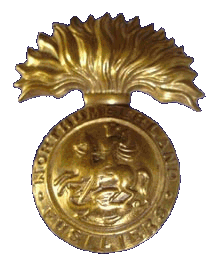
|
|
3rd Independent Machine Gun Company (Northumberland Fusiliers) |
|
The Royal Northumberland Fusiliers Museum
The Abbot's Tower
Alnwick Castle
Alnwick
Northumberland
NE66 1NG
Tel: 01665 602 152 |
The Royal Northumberland Fusiliers
The Regiment was raised in 1674 in the service of the Prince of Orange as the Irish Regiment. Placed on the English establishments in 1685, 5th Foot in 1751.
The Regiment fought at Wilhelmstahl during the Seven Years War (1756-63). It was later involved in the War of American Independence (1775-8) and in St Lucia in 1778.
It served in the Peninsular War (1808-14) fighting at Rolica, Vimiera, Corunna, Busaco, Ciudad Rodrigo, Badajos, Salamanca, Vittoria, Nivelle, Orthes and Toulouse.
During the Indian Mutiny (1857-8) it fought at Lucknow and later was involved in the Second Afghan War (1878-80). It then served during the reconquest of the Sudan (1896-8), including the Battle of Khartoum. Later during the South African War (1899-1902)
it was involved in the battle at Modder River.
In the Great War (1914-1918); It served at Mons, Marne 1914, Ypres 1914, 1915, 1917 and 1918; St Julien, Somme 1916 and 1918; Scarpe 1917 and 1918; Selle, Piave, Struma, Suvla.
During the Second World War (1939-1945) it fought at Dunkirk 1940, Caen, Rhineland, Sidi Barrani, Defence of Tobruk, Tobruk 1941, Cauldron, El Alamein, Salerno, Monte Cassino. It went onto to serve in the Korean War (1950-3) at Imjin.
In 1968 by the Regiment was amalgamated with The Royal Warwickshire Fusiliers, The Royal Fusiliers (City of London Regiment) and Lancashire Fusiliers, to form The Royal Regiment of Fusiliers.
Go to Top
|

|
|
1st Cheshire Regt - 'C' Company. |
|
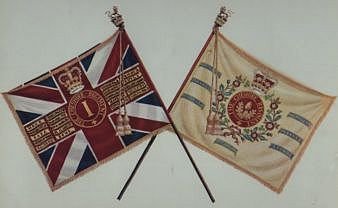
The Regimental Colours |
|
The Cheshire Regiment Museum,
The Castle,
Chester,
Cheshire
CH1 2DN,
Tel: 01244 327 617 |
The 22nd Regiment of Foot was raised in 1689 on the Roodee, Chester for service under William III. It next served in its home county in 1988. During the intervening 300 years, it has spent much time on garrison duty in the Empire.
It has a tradition of having had a detachment at Dettingen. There it won the distinction of wearing the oak leaf whilst parading for Royalty and also on certain Regimental days. The story is that the 22nd protected the King, who was commanding the field, from being taken prisoner the French. The King picked a sprig of oak from a nearby tree and presented it to them. The Regiment itself at the time was in the Mediterranean, however.
The taking of Louisburg in Nova Scotia was its most famous 18th-century event; the Grenadier Company going on with Wolfe to Quebec. A 22nd Grenadier appears to have been present at the death of Wolfe along with Ensign Browne. The regiment proceeded after the Seven Years War to the West Indies and yellow fever, finally taking its place in New York for the American War.
A spell in India led to the 22nd being the only English Regiment in Sir Charles Napier’s force to conquer the Scinde. The great battle at Meeanee on 17 February 1843 is celebrated as the Regimental Day.
The Regiment spent most of the 19th century in the Indian sub-continent or its dependencies.
A 2nd Battalion was raised in 1814 for a short while and re-raised in 1858. It fought in the Boer War in South Africa in 1900. This battalion was amalgamated with the 1st at the end of World War II.
In the Great War 38 battalions were raised by the Cheshire Regiment. At the outset of the war in 1914 the 1st Battalion was exposed to the brunt of two German Army Corps at the village of Audregnies near Mons. Their heroic stand saved the British Expeditionary Force from a disaster and is celebrated as a second Regimental Day on 24 August. This Battalion was in every major action in France throughout the war and won 35 Battle Honours.
The Territorial and New (Kitchener's) Army Battalions fought in France, Gallipoli, Sinai, Palestine, Salonika and Mesopotamia.
The 12th Battalion won the French Croix de Guerre. Over 8,000 officers and men gave their lives.
Between the wars the two regular battalions served in India, Sudan, Palestine and Malta and became noted for their sport and athletic prowess.
Just prior to World War II the Regiment was armed with the Vickers Machine Gun and became a Support Regiment for the duration of the war.
At the outbreak of war the 4th, 5th, 6th and 7th Battalions TA were re-established. A 30th Battalion (Home Defence) and 39 Home Guard battalions made up the Regimental roll. The 2nd Battalion was at Dunkirk, North Africa and Italy before returning to be part of the initial landing at Normandy. The 1st Battalion was in North Africa
and Italy, plus Malta during the siege and finally in NW Europe. The 6th and 7th Battalions
also fought in Italy.
It was 'C' Company, 1st Bn Cheshire Regiments that
served as a X Corps unit attached as necessary to support Infantry assaults,
such as that across the River Volturno.
In 2007 the Cheshire Regiment
ended its unique record of being the only regiment in the British Army to retain
its original title and number, when it was merged with the Worcestershire and
Sherwood Foresters Regiment and the Stafffordshire Regiment, to form the Mercian
Regiment, becoming the 1st Battalion of the new Regiment.
Go to Top
|
 
|
|
No 263 Forward Delivery Squadron, RAC |
The
Royal Armoured Corps was in 1939 formed to encompass a Cavalry Wing (cavalry regiments which had mechanised), and the Royal Tank Regiment. Other regiments joined later as they mechanised. From 1939 to 1945 also included numbered RAC regiments converted from infantry battalions.
The purpose of the Delivery Squadrons was to provide battlefield replacements, direct to the front line, sometimes under fire.
Go to Top
Armoured Regiments Page, Infantry Regiments Page, Artillery Regiments Page, Engineers Page
Division Organisation Page, Units Page, Main, Site Map

















